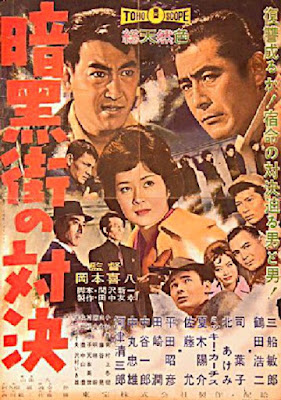Tales of the Underground:
The Last Gunfight
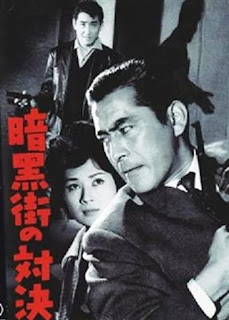
Director: Kihachi
Okamoto
Year: 1960
Rating: 7.5
Crime is on the upbeat in Kojin City just
as is the accompanying jazz beat. Drugs, guns and murder. This is where the
criminals are coming because of a lax look the other way police department
and a welcoming environment of clubs, bars, imported booze and willing women.
Oka (Sizaburô Kawazu) owns most of the city and what he doesn't the
Kozuka crime family does. It begins in style when a cop with a paper lantern
stops a car on the highway at night and is shot point blank in the head but
not before he grabs a case from the back seat. It is full of guns and director
Kihachi Okamoto puts an exclamation point on this by having pistols aimed
at the camera blasting away. So begins this wonderfully stylish crime thriller
infused with color and camera movement. Much of the pleasure of the film
is just how good it looks. In the first ten minutes it jumps around from
character to character before it settles down into a narrative.
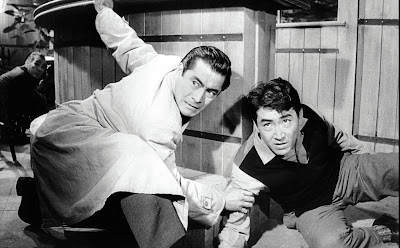
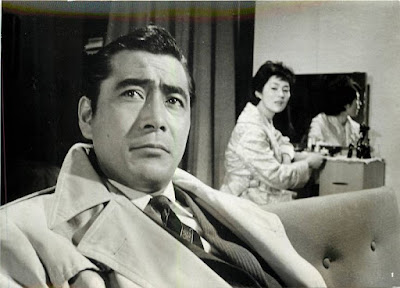
A train arrives with a few professional
killers on board, a woman and her manager who want to set up a strip show
and a man in a beige trench coat who watches everything and gives one fellow
a quick beating when he tries to steal his suitcase. All we see is his arm
flashing back and forth in rapid speed and the unseen man yelling. He is
sleek, handsome with his black hair combed back and a glint of amusement
in his eyes. This is Fujioka, a cop who has been transferred to Kojin after
being found corrupt in his last assignment. He should be a nice fit. He is
played by Toshiro Mifune absolutely pulsing with charisma and cool as he
proudly tells the police and Oka that he is as corrupt as an apple core.
Just pay him he tells Oka.
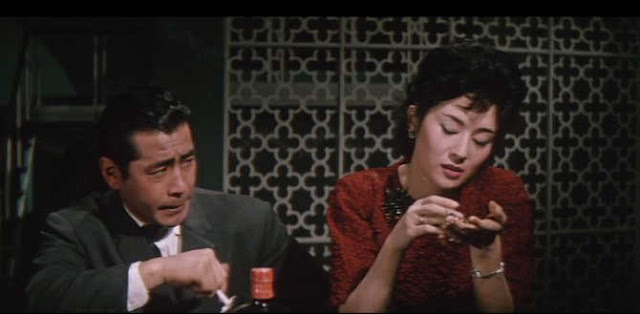
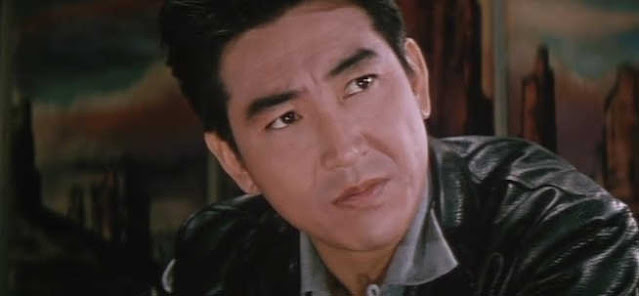
His character feels influenced to me by
Hammet's The Continental Detective as he slowly stirs up trouble between
the two gangs always looking the innocent bystander. He digs around about
the accidental death of a woman three years ago. She was the wife of Tetsuo
( Kôji Tsuruta), an ex member of the Kozuka family who has gone straight
and has opened a bar. But Tetsuo has his doubts about her death as well and
wants justice. In the middle of this is Sally (Yôko Tsukasa), Oka's
mistress but also the sister of the man in the truck who ran over the wife
and has since disappeared. Oka is ready to take over the whole town and knock
off the other gang. He hires four killers all dressed in black with skinny
ties and tells them in the meantime to be an act on stage where they sing
Kill the Moon.
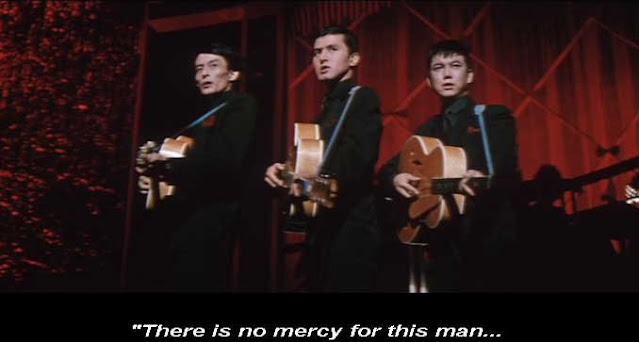
A lot of the film plays out as expected
- Fujioka and Tetsuo have their fights and arguments but realize eventually
that they are on the same side and bond. These were two big stars who were
only to get bigger during the 1960s. This is an early example of ninkyo eiga
Yakuza films where honor and obligation were the touchstones. They proliferated
in the 1960s with either Tsuruta, Ken Takakura or Junko Fuji starring in
them. This one was produced by Toho though while most of them were made by
Toei after they signed up Tsuruta.







